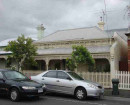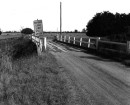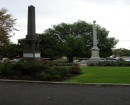Back to search results
BENDOC UNION CHURCH
16 NICHOL STREET BENDOC, EAST GIPPSLAND SHIRE
BENDOC UNION CHURCH
16 NICHOL STREET BENDOC, EAST GIPPSLAND SHIRE
All information on this page is maintained by Heritage Victoria.
Click below for their website and contact details.
Victorian Heritage Register
-
Add to tour
You must log in to do that.
-
Share
-
Shortlist place
You must log in to do that.
- Download report
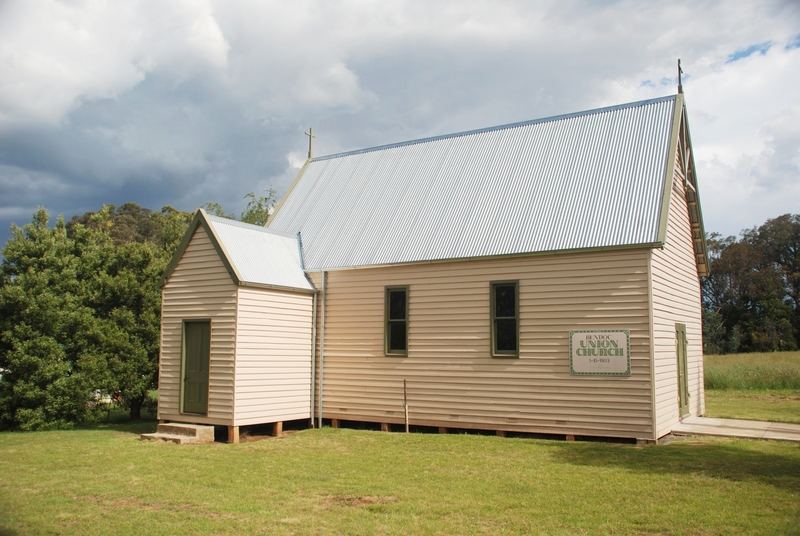
BENDOC UNION CHURCH SOHE 2008


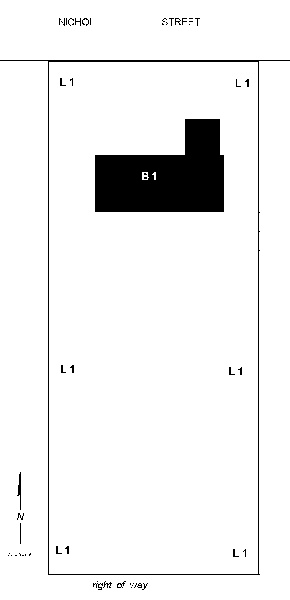
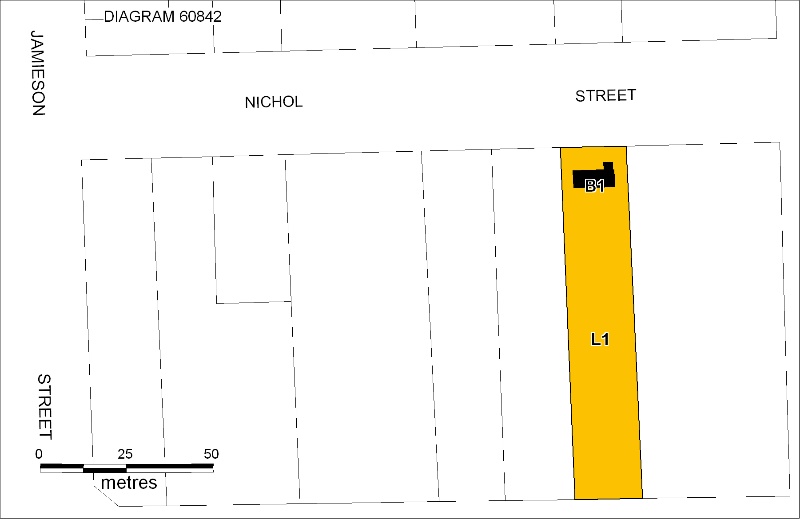
On this page:
Statement of Significance
What is significant?
The Bendoc Union Church was opened in October 1903 on a site donated by Norman Cameron, a district farmer and one of the original Trustees. Bendoc is a remote settlement originally developed in the 1850s as a gold settlement and later as a farming and timber town. Union, or multi-denominational, churches are relatively rare in Victoria. Bendoc Union Church is a simple timber building, constructed of local hardwood including sawn hardwood weatherboards. A projecting vestry faces the street. The original shingle roof has been replaced with corrugated iron, and only part of one of the finials (originally crosses) remains. The barge board detail and elaborate entry doors with hand-forged hinges are of interest. Internally, the church is substantially intact. The walls are of whitewashed sheet metal nailed to the studs. The ceiling is of ripple iron and features vent grilles which have been hand punched in a simple decorative pattern. The church still operates as a Union Church with the building held in trust for the local farming and town community. Today it is used by Anglicans, Presbyterians and Catholics.
How is it significant?
The Bendoc Union Church is of historical, social and architectural importance to the State of Victoria.
Why is it significant?
The Bendoc Union Church is historically and socially important as a rare and perhaps unique surviving example of a Union church still used for its original purpose and still owned by a community trust. It is an important manifestation of a remote rural locality’s response to community needs and continues to serve in this capacity.
The Bendoc Union Church is of architectural importance as a vernacular church building reflecting available materials and local craftsmanship. Only the western doors and the decorated bargeboards have any pretensions and the hand-punched ceiling vent grilles are of architectural interest. The use of sawn hardwood weatherboards is unusual in the wider Victorian context but typical in the East Gippsland region with its timber resources. The high degree of intactness of the building adds to its significance.
The Bendoc Union Church was opened in October 1903 on a site donated by Norman Cameron, a district farmer and one of the original Trustees. Bendoc is a remote settlement originally developed in the 1850s as a gold settlement and later as a farming and timber town. Union, or multi-denominational, churches are relatively rare in Victoria. Bendoc Union Church is a simple timber building, constructed of local hardwood including sawn hardwood weatherboards. A projecting vestry faces the street. The original shingle roof has been replaced with corrugated iron, and only part of one of the finials (originally crosses) remains. The barge board detail and elaborate entry doors with hand-forged hinges are of interest. Internally, the church is substantially intact. The walls are of whitewashed sheet metal nailed to the studs. The ceiling is of ripple iron and features vent grilles which have been hand punched in a simple decorative pattern. The church still operates as a Union Church with the building held in trust for the local farming and town community. Today it is used by Anglicans, Presbyterians and Catholics.
How is it significant?
The Bendoc Union Church is of historical, social and architectural importance to the State of Victoria.
Why is it significant?
The Bendoc Union Church is historically and socially important as a rare and perhaps unique surviving example of a Union church still used for its original purpose and still owned by a community trust. It is an important manifestation of a remote rural locality’s response to community needs and continues to serve in this capacity.
The Bendoc Union Church is of architectural importance as a vernacular church building reflecting available materials and local craftsmanship. Only the western doors and the decorated bargeboards have any pretensions and the hand-punched ceiling vent grilles are of architectural interest. The use of sawn hardwood weatherboards is unusual in the wider Victorian context but typical in the East Gippsland region with its timber resources. The high degree of intactness of the building adds to its significance.
Show more
Show less
-
-
BENDOC UNION CHURCH - History
Associated People: Norman Cameron donated the landBENDOC UNION CHURCH - Permit Exemptions
General Exemptions:General exemptions apply to all places and objects included in the Victorian Heritage Register (VHR). General exemptions have been designed to allow everyday activities, maintenance and changes to your property, which don’t harm its cultural heritage significance, to proceed without the need to obtain approvals under the Heritage Act 2017.Places of worship: In some circumstances, you can alter a place of worship to accommodate religious practices without a permit, but you must notify the Executive Director of Heritage Victoria before you start the works or activities at least 20 business days before the works or activities are to commence.Subdivision/consolidation: Permit exemptions exist for some subdivisions and consolidations. If the subdivision or consolidation is in accordance with a planning permit granted under Part 4 of the Planning and Environment Act 1987 and the application for the planning permit was referred to the Executive Director of Heritage Victoria as a determining referral authority, a permit is not required.Specific exemptions may also apply to your registered place or object. If applicable, these are listed below. Specific exemptions are tailored to the conservation and management needs of an individual registered place or object and set out works and activities that are exempt from the requirements of a permit. Specific exemptions prevail if they conflict with general exemptions. Find out more about heritage permit exemptions here.Specific Exemptions:General Conditions:
1. All alterations are to be planned and carried out in a manner which prevents damage to the fabric of the registered place or object.
2. Should it become apparent during further inspection or the carrying out of alterations that original or previously hidden or inaccessible details of the place or object are revealed which relate to the significance of the place or object, then the exemption covering such alteration shall cease and the Executive Director shall be notified as soon as possible.
3. If there is a conservation policy and plan approved by the Executive Director, all works shall be in accordance with it.
4. Nothing in this declaration prevents the Executive Director from amending or rescinding all or any of the permit exemptions.
5. Nothing in this declaration exempts owners or their agents from the responsibility to seek relevant planning or building permits from the responsible authority where applicable.
Exterior
* Repairs and maintenance which replace like with like.
* Installation, repair, removal or replacement of fences and gates.
* Laying or removal of concrete or bitumen paving.
* Reblocking and replacement of rotted stumps and bearers
Interior
* Painting of previously painted walls and ceilings provided that preparation or painting does not remove evidence of the original paint or other decorative scheme.
* Removal of paint from originally unpainted or oiled joinery, doors, architraves, skirtings and decorative strapping.
* Installation, removal or replacement of curtain track, rods, blinds and other window dressings.
* Installation, removal or replacement of hooks, nails and other devices for the hanging of mirrors, paintings and other wall mounted artworks.
* Installation, removal or replacement of ducted, hydronic or concealed radiant type heating provided that the installation does not damage existing skirtings and architraves and provided that the location of the heating unit is concealed from view.
* Installation, removal or replacement of electrical wiring provided that all new wiring is fully concealed.
* Installation, removal or replacement of smoke detectors.
-
-
-
-
-
BENDOC UNION CHURCH
 Victorian Heritage Register H1775
Victorian Heritage Register H1775 -
ASPEN'S BATTERY
 Victorian Heritage Inventory
Victorian Heritage Inventory -
WINDLE HUT/OLD BENDOC POST OFFICE
 Victorian Heritage Inventory
Victorian Heritage Inventory
-
'Mororo' 13 Oxford Street, Malvern
 Stonnington City
Stonnington City -
1 Arnold Street
 Yarra City
Yarra City -
1 Austin Street
 Yarra City
Yarra City
-
-






